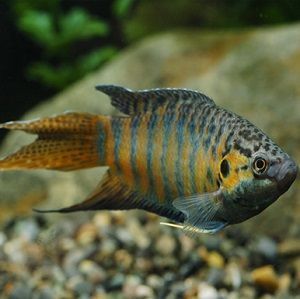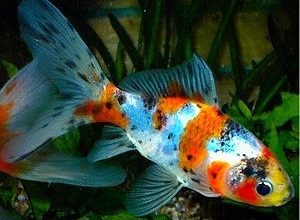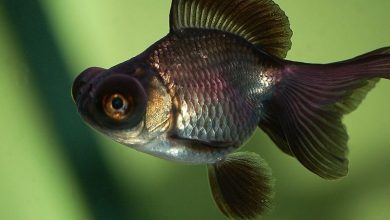Paradise Fish, Macropodus Opercularis


- Scientific name: Macropodus opercularis
- Common Name: Paradise Fish
- Aquarium size: 80 liters
- Temperament: Aggressive
- Temperature: Between 10º and 22ºC
- pH: Between 6 and 8
- Diet: Omnivore
- Length: 10 ctms.
Description
The Paradise fish or Macropodus Opercularis is a freshwater fish, which is considered a coldwater fish . Its resistance to temperature drops is spectacular, it can withstand temperatures close to 0ºC.
It belongs to the order of the Osphronemidae, of the Perciformes family and the Belontidae subfamily.
It is one of the classic aquarium fish, being one of the first ornamental fish imported to Europe.
It is known that the first specimens were introduced by a French soldier named Gerault in 1869. Of the first 100 specimens, only 22 survived, which were successfully bred by another Frenchman, Pierre Carbonnier.
The Paradise fish,It is also known under other names such as Chinese fighting fish, gourami paradise or blue fish of paradise.

Morphology
Although it is not as well known a fish as the Betta , which also belongs to the Belontidae subfamily, the Paradise fish is equally spectacular.
Like the Betta, the Paradise fish possesses the respiratory organ called the labyrinth , which allows it to breathe air to a certain extent, and under certain circumstances.
It is easy to distinguish the male Paradise fish from the female Paradise fish . Their sizes are different, while the male can reach 10 centimeters, the female is smaller.
The color in the male is quite spectacular. Its body is greenish brown, on which stand out vertical stripes alternating shades of blue, green and red.
The pectoral fins are transparent, while the dorsal, anal and caudal fin have soft rays , which go from purple to red.
As with all species of fish raised for aquariums, new varieties are being created, the result of different crosses and hybridizations. It is possible to find an Albino Paradise fish, even a green or red Paradise fish.
Distribution and habitat
They are native to Southeast Asia , we can find them in the center and north of Vietnam, in the rivers of China (Yangtze river system), on the island of Hainan and northwestern Laos.
Although they are not native, there are populations that have been introduced in South Korea, Japan, Malaysia, India, Singapore and the United States.
Due to its resistance to temperatures, it is possible to find the Paradise fish used to different types of habitats and conditions, such as streams, ponds, irrigation canals, rice fields, even in some mountain streams.
Aquarium conditions
An aquarium for a pair of Paradise fish should have at least 80 liters. He does not need the aquarium to have a heating installation, or even aeration, the composition of the water is quite indifferent to him.
However, for Macropodus opercularis to be in the best possible conditions, avoiding any type of disease, it is recommended to keep the water at temperatures that range between 10º and 22º, with a pH between 6 and 8 and a hardness of 90 to 357 ppm.
The aquarium can be decorated, although if we want to avoid the substrate for better maintenance, it can be done. The fish will find themselves in a calmer situation, adding plants and if we want to raise fish, we have to provide surface vegetation, so that they can make their nests of bubbles.
Ideas for setting up your aquarium
- Best complete aquariums
- Best Small Aquarium
- Best external filters for aquarium
- Best aquarium heater
- Best Aquarium Oxygenator
- Best Aquarium LED Display
- Better sand
- Best substrate for aquarium
- Best compost for plants
- Best Aquarium Stones
- Best aquarium logs
- Best Aquarius Test
- Best Ph meter
- Best fish food
- Best Fish Food Dispenser
Diet
In specialized stores we can find suitable dry food, which is usually rich in protein.
If we can, their diet should be supplemented with small insects and their larvae, live or frozen.
As it is an omnivorous and very voracious fish , there are some aquarists who incorporate some meat into their diet.
Behavior and compatibility
Male Paradise fish are aggressive towards other smaller species, and become territorial in reproductive periods.
They are not exactly the best fish to set up a community aquarium, but if we want to introduce some other species, it must be quite peaceful and of a similar size.
Fish compatible with Paradise fish
Compatible fish without restrictions
- Ancistrus
- Snail Apple
Restricted Compatible Fish
- Goldfish
Reproduction
Macropodus create bubble nests for their reproduction , for which we must create the right conditions, such as providing surface vegetation and slightly raising the temperature of the aquarium.
The aquarium should be kept as tight as possible so that the fry have access to a layer of warm, humid air at birth. The tank can be covered with a transparent film, to achieve the optimal conditions.
Before laying, the female turns a paler color. Spawning occurs under the nest, in the typical Osphronemids embrace, in which the male engulfs the female.
At the moment of climax, the eggs are released and float towards the nest, sometimes assisted by the male. The process is repeated until the female finishes laying.
Eggs usually take 3-4 days to hatch . When the fry swim on their own, the adults lose interest in the nest.
During the first days they require a specific food, after which they can accept to be fed with some larvae and small insects.
Tips
It is not usual to buy specimens raised in freedom, most of the Paradise fish are bred in captivity, obtaining species, albino, red, blue, even some varieties without stripes. The price of the Paradise fish is in line with its exclusivity or rarity.
Sometimes it can be difficult to distinguish the Paradise fish from other fish with similar characteristics.
There are several characteristics of this species: bifurcated caudal fin , dark brownish opercular spot with reddish posterior margin, 7 to 11 vertical bars, ocular fringe, dorsal surface of the head and predorsal region with dark spots and the posterior margins of the scales, they are not darker than the scales themselves.
Photos of the Paradise fish


Paradise Fish






